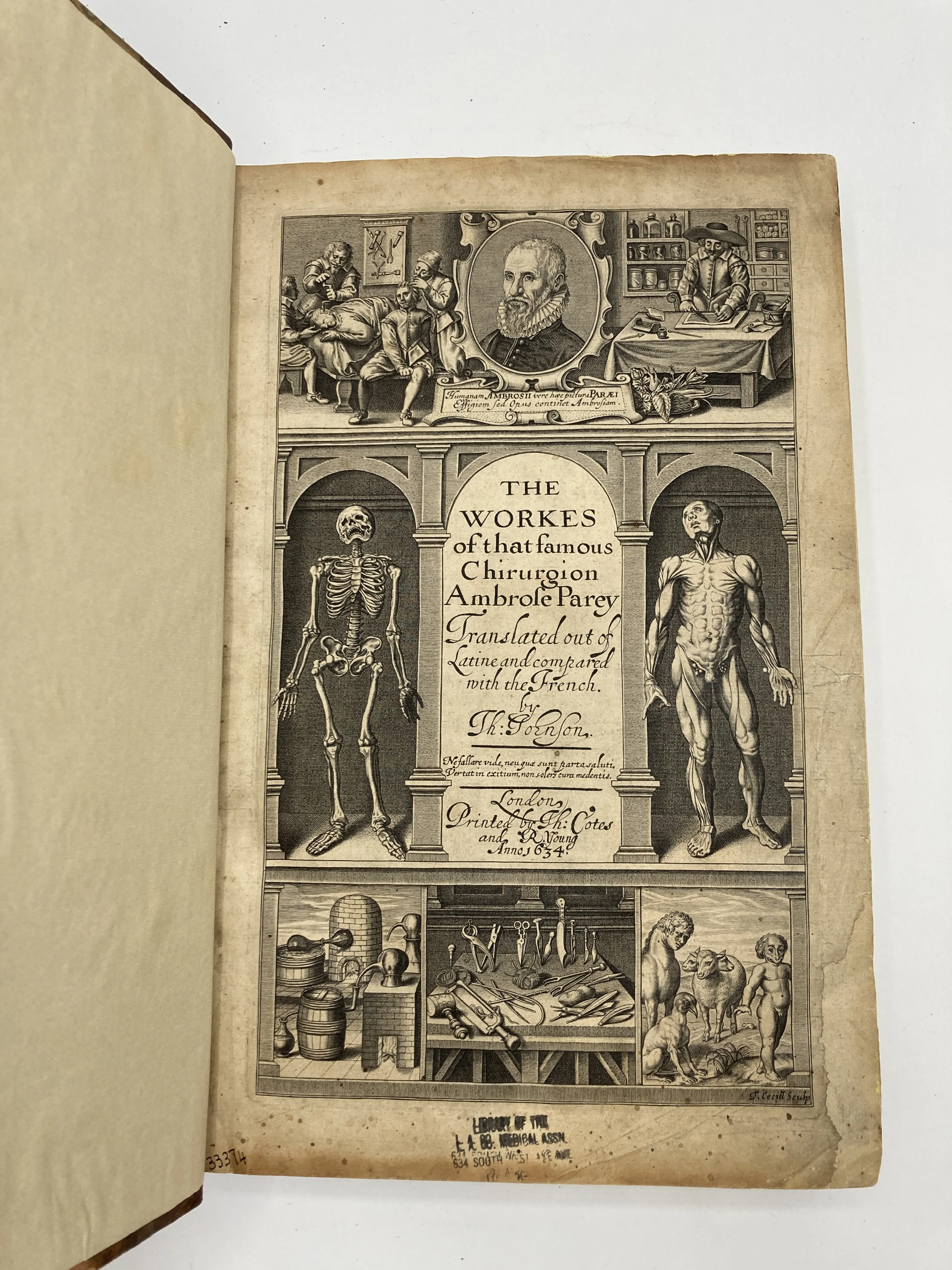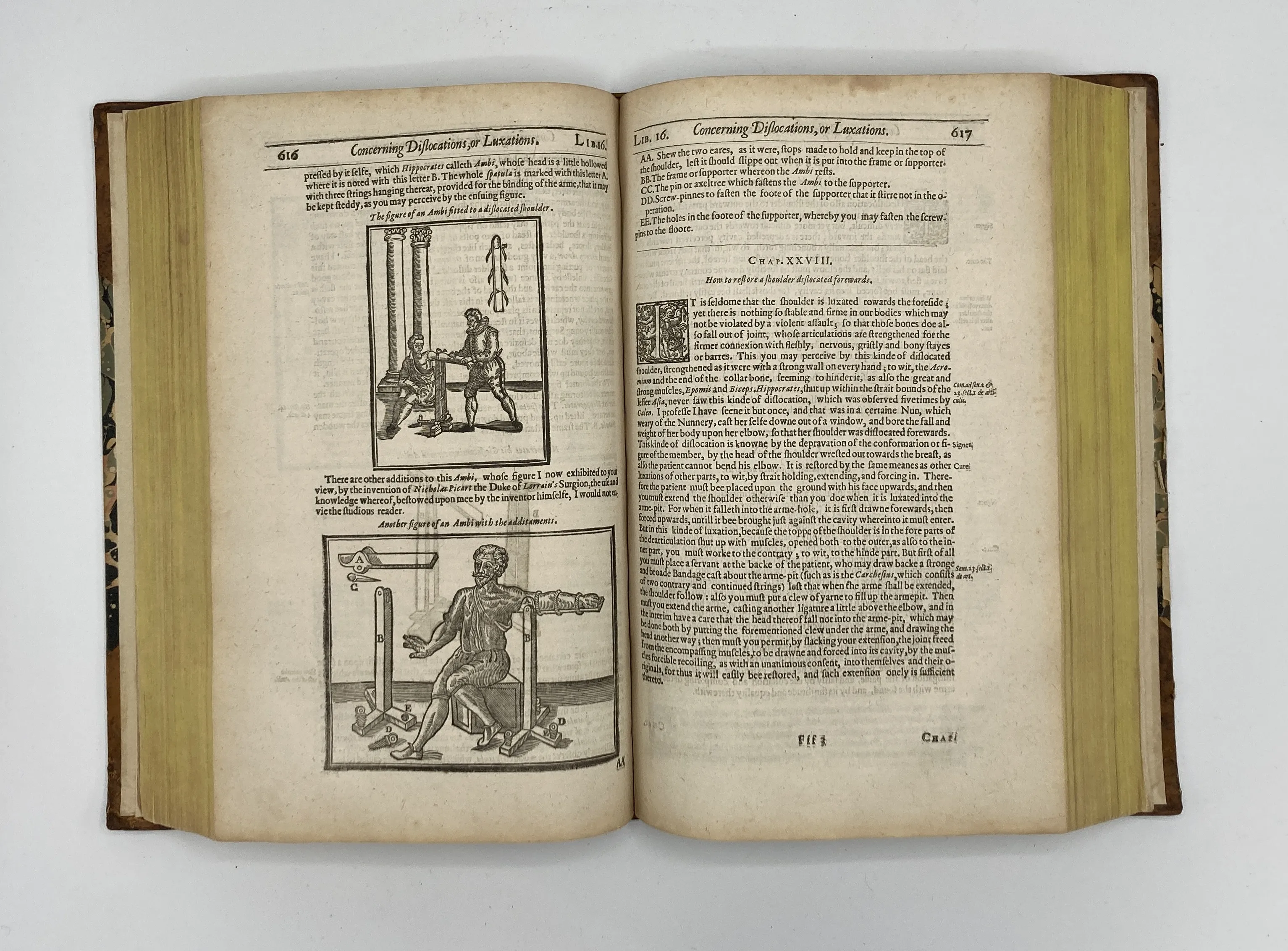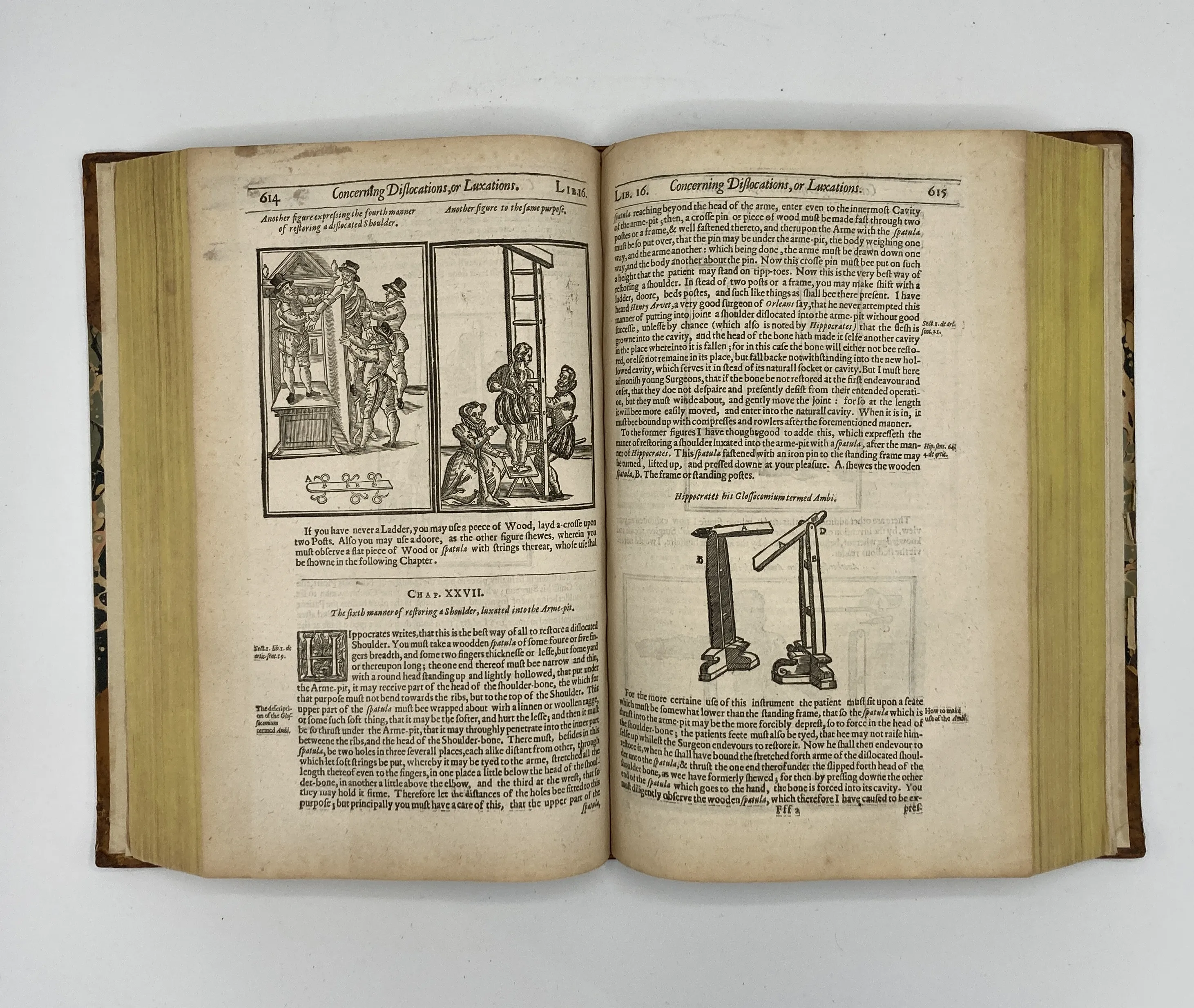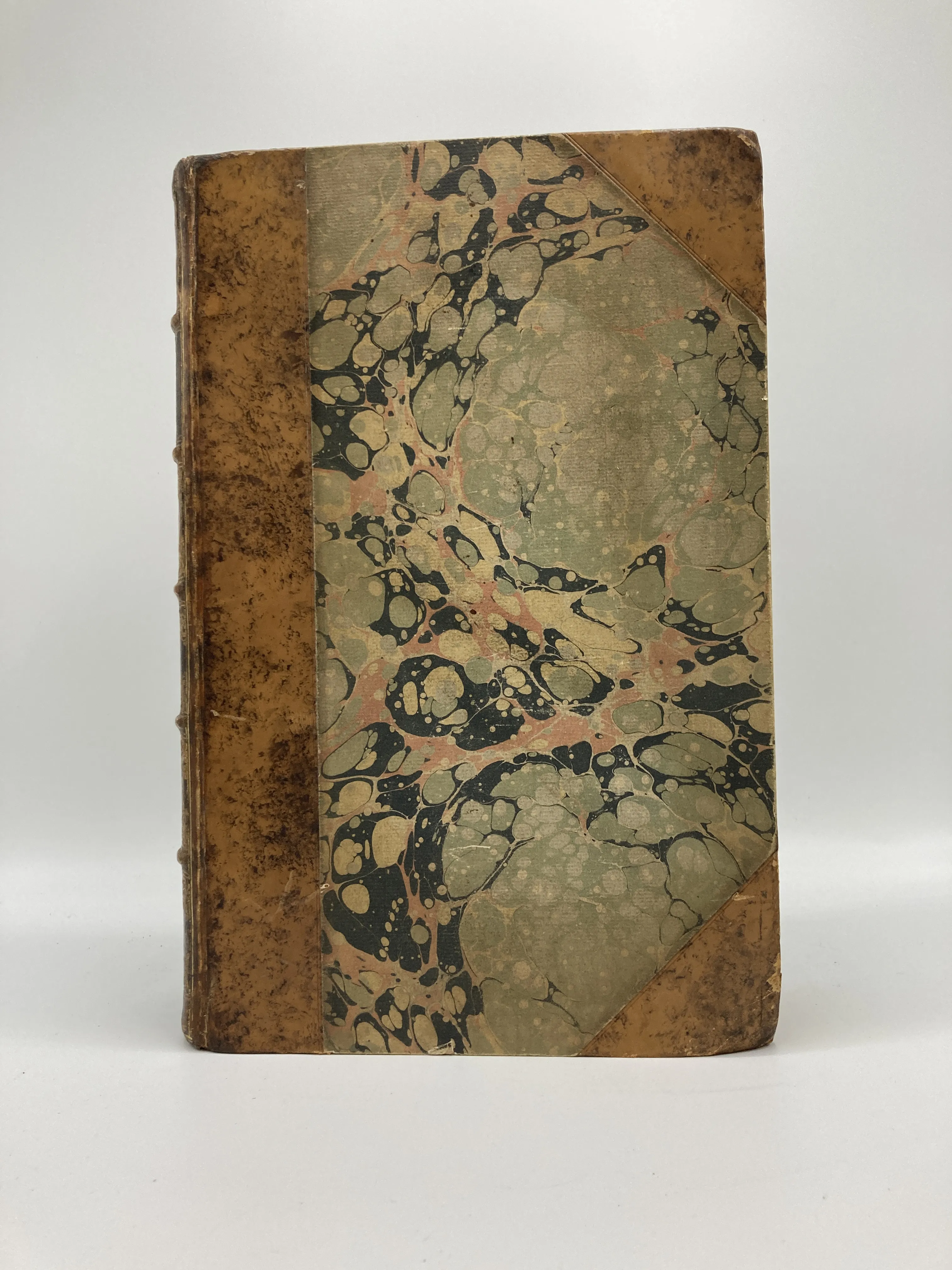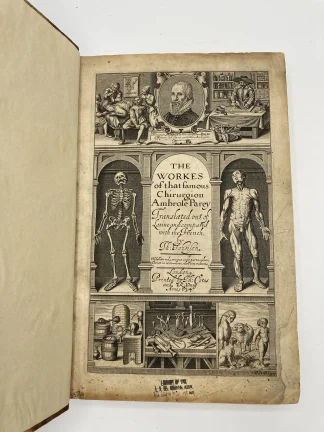PARÉ, Ambroise
The Workes of that famous chirurgion Ambrose Parey
London, Thomas Cotes and R. Young, 1634£27,500.00
FIRST EDITION THUS. Folio. pp. [14], 487, [1], 553-1083, [1], 1093-1173, [23]. Roman letter, little italic. Engraved t-p by Thomas Cecill with portrait of Ambrose Paré, scenes of surgeons at work, a skeleton and skinned man, surgical instruments and mythological creatures, minor repair to lower outer margin. Thomas Johnson’s dedication to Edward Herbert and Paré’s to Henry III of France, reader’s note, preface and contents page, index at end. Medical woodcuts throughout of human anatomy, surgical instruments, animals and monsters, in good impression. Historiated initials and ornaments. A few marginal restorations and repaired tears, faint damp staining to foredge of first few signatures, small rust hole to 2D2, minorly affecting text. Bookplates of Le Roy Crummer (1871-1934) and Howard L. Updegraff to pastedown, embossed stamp of Brian Davies to ffep and ink stamp of Los Angeles County Medical Association in lower margin of t-p. A fine copy in later half-calf over marbled boards, rebacked, spine gilt and lemon edges.
A crisp copy of the first English version of 16th C barber-surgeon and innovator Ambroise Paré’s complete works, including translator Thomas Johnson’s rarely surviving address to the reader. Comprising a total of 29 books, Paré wrote on a range of medical subjects, including anatomy, treatment of wounds, diseases, poisons, tumours, fractures, and childbirth. He notably also writes about monsters and prodigies, the embalming of the dead and distillation. ‘Probably his best-known innovations were his discarding the use of boiling oil in gunshot wounds and the reintroduction of the simple ligature instead of red-hot cautery after amputation. He invented many surgical instruments and was especially adept at devising ingenious artificial limbs’ (Heirs of Hippocrates, 163). As a result of his rising fame, he was named chirurgien ordinaire to King Henry II and continued to serve the French monarchy through the reigns of Francis II, Charles IX and Henry III, who appointed him premier chirurgien in 1562.
The volume’s illustrations are of very high quality, illustrating a range of surgical instruments, some of which Paré designed himself, such as the ‘crow’s beak’, a tool used to tie ligatures on amputated limbs or open wounds, a precursor to the modern haemostat, and prosthetic limbs. Further included are vivid scenes of medical procedures, such as the removal of bladder stones and various dislocation procedures, and detailed anatomical illustrations due to Paré’s frequent dissections. Images of mythological monsters are classed together with malformed and conjoined births, accompanied by recorded accounts of each example. While the collection is groundbreaking and very comprehensive, Paré’s reliance on the popular theory of the four humours antiquates much of his work.
Book 24, ‘Concerning the Generation of Man’ discusses early gynaecology and obstetrics, focussing on the female reproductive system, signs of conception and labour, birthing positions, and aftercare of the mother and child. His ‘revival of the podalic version repopularised the procedure, which bad been described by Soranus of Ephesus’, whereby the fetus is turned in the womb so that it emerges feet first. Once a child is born, Paré recommends that it is bathed in warm water and wine, before being anointed with oil. He also comments on the menstrual cycle, abortion, premature births and causes of infertility.
This volume was owned by Le Roy Crummer, an expert on heart disease in the late 19th and earl 20th C, who was also a member of the Royal Society of Medicine and Professor of History of Medicine at the University of California. Subsequent owners have included the Californian reconstructive surgeon Howard L. Updegraff, who was based in Hollywood.
ESTC: S115392; Wellcome: I 4825; Russell: 646; Cushing: P97; Waller: 7177; Doe: 51; Morton: 6140.In stock


